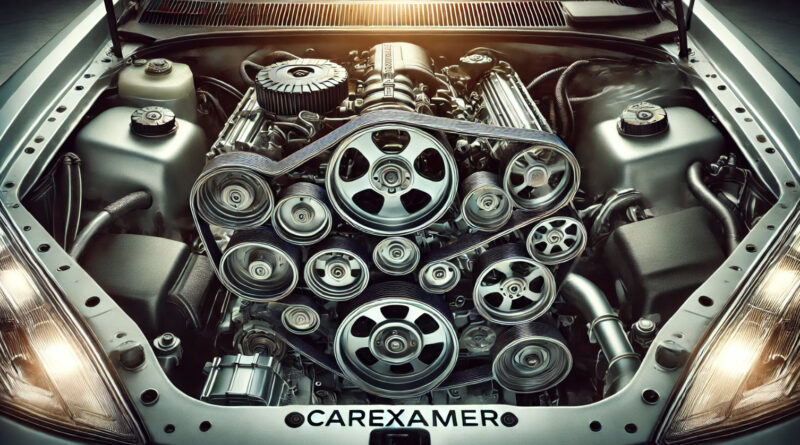Guide How Many Fan Belts Does a Car Have?
In this article, we’ll explore how many fan belts a car typically have, what they do, and how to maintain them. When it comes to maintaining your car, understanding the various components and how they function is crucial. One such component is the fan belt, an essential part of your vehicle’s engine system. However, the term “fan belt” can be a bit misleading, as modern cars typically have more than one belt under the hood, each serving different purposes.
What Are Fan Belts?
Fan belts are rubber belts that drive various engine components. In older vehicles, the fan belt was specifically responsible for driving the cooling fan, which is why it was named a “fan belt.” However, with advancements in automotive technology, the role of the fan belt has evolved, and the term is now often used interchangeably with other types of belts, such as serpentine belts or V-belts.
Types of Belts in a Car
Depending on the make and model of your car, you might encounter several types of belts, each with its specific function:
- Serpentine Belt:
- Function: The serpentine belt is the most common belt found in modern vehicles. It is a long, continuous belt that drives multiple peripheral devices, such as the alternator, power steering pump, water pump, and air conditioning compressor.
- Number of Belts: Most cars with a serpentine belt system have just one serpentine belt that handles all these functions.
2. V-Belts:
- Function: V-belts are used in older vehicles and some modern ones with multiple belts instead of a single serpentine belt. Each V-belt drives a specific component, such as the alternator or power steering pump.
- Number of Belts: Cars with V-belt systems can have two or more V-belts, depending on the number of components driven.
3. Timing Belt (or Timing Chain):
- Function: The timing belt (or chain) is not typically considered a fan belt, but it’s an essential belt in the engine. It synchronizes the rotation of the crankshaft and camshaft, ensuring that the engine’s valves open and close at the correct times during each cylinder’s intake and exhaust strokes.
- Number of Belts: Most cars have one timing belt or chain.
So, How Many Fan Belts Does Your Car Have?
- Modern Cars: Typically, modern vehicles are equipped with a single serpentine belt that powers most of the engine’s accessories. This means, in most cases, your car will have one fan belt (serpentine belt).
- Older Cars or Some Specific Models: If you own an older car or a vehicle with multiple belts, your car may have several V-belts, each driving different components. In this case, you could have two or more fan belts.
Why It’s Important to Maintain Your Car’s Belts
Regardless of how many belts your car has, it’s vital to keep them in good condition. Worn or damaged belts can lead to a host of problems, including loss of power to critical components, engine overheating, or even complete engine failure. Here’s what you can do to maintain your car’s belts:
- Regular Inspections: Check your belts for signs of wear, such as cracks, fraying, or glazing. If you notice any of these, it’s time to replace the belt.
- Listen for Unusual Noises: A squealing noise when you start your car or turn on the AC could indicate a loose or worn-out belt.
- Follow Manufacturer Guidelines: Refer to your vehicle’s owner’s manual for recommended belt replacement intervals. Timing belts, for example, usually need to be replaced every 60,000 to 100,000 miles.
The number of fan belts in your car depends on its age, make, and model. While most modern vehicles use a single serpentine belt to drive multiple engine components, older vehicles might have several V-belts, each serving a specific function. Understanding the types of belts your car has and keeping them well-maintained is crucial for ensuring your vehicle runs smoothly and efficiently. Regular inspections and timely replacements can save you from costly repairs and keep your car in top condition.
Buying a used VW. Buying used vauxhall, BMW, Jaguar, Ford, Volvo, Range rover, Bentley, Aston Martin, Porsche, Ferrari, Lamborghini, Maserati, Hyundai, Tesla, Honda, Pagani

